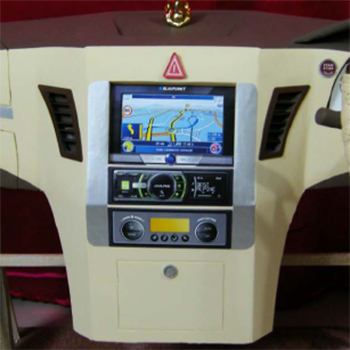The automobile industry today is developing at a very fast and rapid rate. This has led to a wide choice for the user to select from. This dense competition has forced manufactures to develop and adopt new technologies from all walks of life. Automobiles today have ceased to exist just as a mode of conveyance and have become a matter of experience. Along with this development, the user’s role has landed in the centre for the technical development. It has become more important to design suitable and functional user interfaces, and usefulness has increased as the keyword. To increase usefulness, it must be, among other things, feasible for the user, in the simplest way, to determine how to act in a certain situation. A user interface is the part of a product or a system that communicates with the user. In other words, it is the part that gives the clues to how the product shall be used, for example, buttons or instructions on the screen. To construct functioning user interfaces, one has to know the user’s psychic requirements and also understand how the human thinks and creates meaning out of and conceives the world around them.





